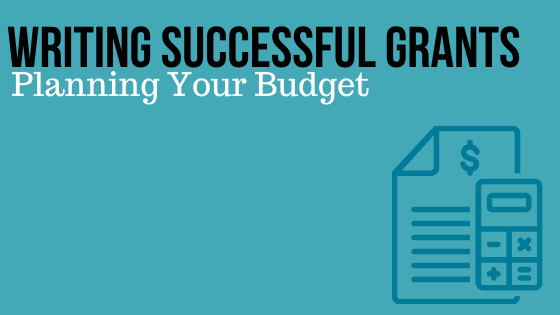This blog is part two of a four-part series on grant writing inspired by resources published by the National Institutes of Health (NIH) and others. Today’s guest blog was written by Annakay Kruger, Science Writer at Promega. Reposted from the Promega Connections blog with permission.
Your quest for composing and submitting the perfect grant proposal is well underway. You have found your niche and designed your research accordingly. However, you must tread carefully—you will soon have to endure the next trial: planning your budget.
It is important in any grant application to effectively outline and clarify your budget needs. Any poorly considered aspects of your budget may not reflect well on the overall viability of your proposal, so make sure you provide your reviewers with an accurate description of what resources you will need to accomplish your research goals.
Find your Sweet Spot
A budget that is significantly over or under what would otherwise be reasonable to achieve your goals can undermine reviewers’ confidence in your proposal, as it may seem to them that you don’t fully understand the scope of your research. With your budget proposal, you need to find the range that is just right for you—not too big, and not too small. You will be asked to outline the things that you need to fulfill the aims that you put forth. You should request the money to purchase what you need and provide good justification for your expenses, especially big-ticket items like expensive equipment, as well as personnel.
Be sure that you carefully review the Funding Opportunity Announcement (FOA) for applicable criteria that you will need to follow in building and planning your budget. There may be limits on the types of expenses you can request, spending caps and overall funding limits. Reviewers will not only determine whether your budget is reasonable, but whether it complies with governing cost principles and other requirements unique to the award for which you are applying.
To learn more, read the NIH article: “Writing a Winning Application―Nail your Budget.”
Wants vs. Needs
Take the time to identify those budget items that are necessary to your work and those that are not. As you build out your Specific Aims and design your experiments, your needs will become clear. Make sure that in the process of doing so you seek opportunities to offset cost. Gauge the support that you’ll get from your institution, including resources and funding capacity. You may be able to share equipment, resources and space with other investigators. You should also be prepared for some less obvious expenses like instrument warranty and maintenance costs. If you do need to ask for a high-budget item, be certain that it is a necessity, justify the purchase appropriately, and explain how not having it could impact your project.
Before you ask for money in your application, make sure that what you’re asking for is essential. You should also provide details on the resources that are already available to you. Reviewers will determine whether the costs defined are reasonable given the research aims and methods laid out in your proposal.
Read more about distinguishing your wants versus your needs in this NIH article: “Writing a Winning Application―Define Resources.”
Direct vs. Indirect Costs
It is important to understand the difference between direct costs and indirect costs. Direct costs are those expenses that come from your research: salaries, travel, equipment and supplies. You’ll also be requesting facilities and administrative (F&A) costs, or indirect costs. Examples of indirect costs include payroll, departmental administration and student services, among others. F&A costs are determined by applying your organization’s negotiated rate to your direct cost base.
The total costs requested in your budget will be allowable direct costs and allowable F&A costs. While you will only need to itemize your direct costs, it is important to understand how both are defined and calculated so you can build a realistic budget with all the key elements accounted for.
For more about direct versus indirect costs, read this NIH article: “Know the Basics for Facilities and Administrative Costs.”
Your budget deserves careful consideration. The review committee will want to see a budget that strikes the right balance between sensibility and necessity. Take the time to parse out your wants versus your needs and account for all the moving pieces. Your review committee is more likely to approve an application that puts forth a thoughtfully prepared and well-studied budget proposal, which will bring you that much closer to the funding you need.
WOULD YOU LIKE TO SEE MORE ARTICLES LIKE THIS? SUBSCRIBE TO THE ISHI BLOG BELOW!
SUBSCRIBE NOW!



